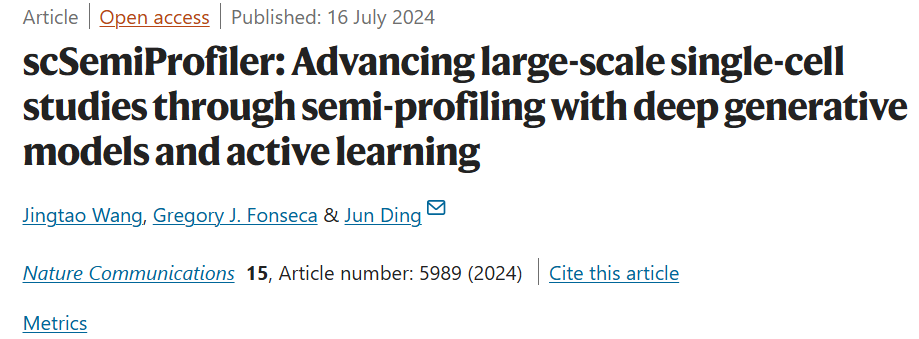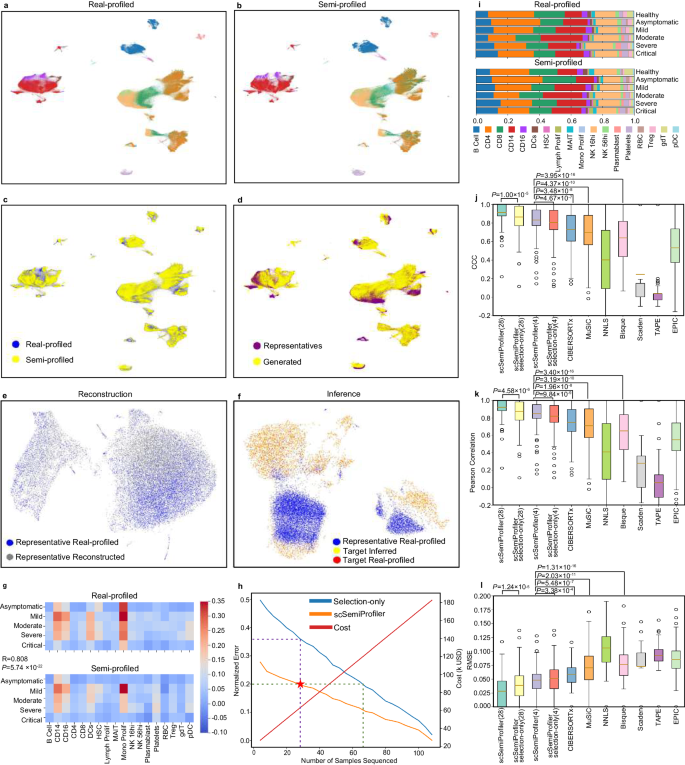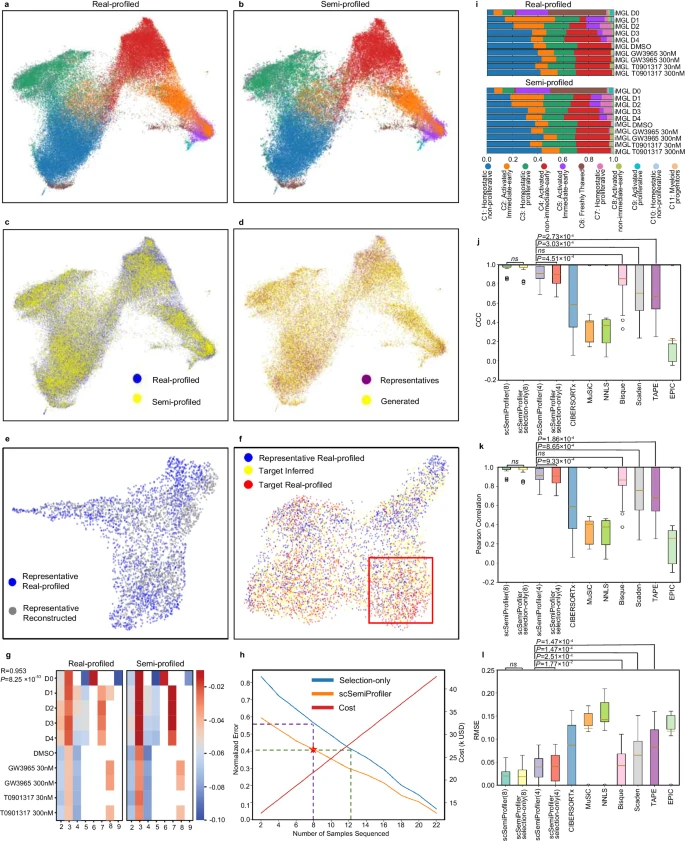

Edit | Radish Skin
Single cell sequencing has become a powerful tool for unraveling the cellular complexity of complex diseases. However, its high cost limits its widespread application in biomedical research.
Traditional cell deconvolution methods can infer cell type proportions from cheaper bulk sequencing data, but cannot provide the fine resolution required for single-cell analysis.
To address this challenge, researchers at McGill University in Canada developed "scSemiProfiler", which combines deep generative models with active learning strategies to create an innovative computing framework.
scSemiProfiler is highly accurate and capable of inferring single cell profiles in large populations. It can be tightly integrated with real single-cell analysis data to support fine cell analysis.
The research is titled "scSemiProfiler: Advancing large-scale single-cell studies through semi-profiling with deep generative models and active learning" and was published in the magazine "Nature Communications" on July 16, 2024 .

Single-cell sequencing technology has greatly changed biological research, revealing the subtle differences between cells and promoting biomarker discovery and the development of personalized treatment strategies. However, the high cost of single-cell sequencing (e.g., the cost of sequencing 20,000 cells is estimated to be $6,000 in 2023) limits its large-scale research.
Deconvolution Methods
To reduce costs, there are many deconvolution methods that can resolve cell populations in mixed data, including:
These methods strike a balance between economy and data resolution, but still have limitations in resolution and accuracy and cannot achieve single-cell level analysis.
Single-cell resolution analysis
Single-cell resolution analysis is critical for a deep understanding of disease complexity and its response to treatment. It can perform the following analysis:
Combined with machine learning technology, it helps to decode cellular heterogeneity and dynamic changes.
scSemiProfiler
To address the above challenges and provide a cost-effective approach to broad-based single-cell sequencing, a research team at McGill University launched the single-cell Semi-profiler (scSemiProfiler). This depth-generating computational tool is designed to significantly increase the precision and depth of single-cell analysis.

Overview
scSemiProfiler is a more economical and more Scalable single-cell sequencing options to facilitate advanced single-cell analysis with greater accessibility.
Methods
This tool effectively combines active learning techniques with deep generative neural network algorithms, aiming to provide single-cell resolution data at a more affordable price. scSemiProfiler aims to simultaneously achieve two fundamental goals in the semi-profiled process:



透過對各種數據集的全面評估,scSemiProfiler 始終如一地產生semi-profiled 的單細胞數據,這些數據與實際的單細胞數據集緊密相關,並準確反映下游任務的結果。
因此,scSemiProfiler 有助於改善獲取單細胞數據以進行大規模研究,包括疾病隊列研究等。
透過降低大規模單細胞研究的成本,scSemiProfiler 有望促進單細胞技術在廣泛的生物醫學研究中的應用。這項進步將擴大生物學研究的範圍並增強其深度。
論文連結:
https://www.nature.com/articles/s41467-024-50150-1
The above is the detailed content of Higher resolution, more economical, deep generative models combined with active learning strategies to advance large-scale single cell research. For more information, please follow other related articles on the PHP Chinese website!
 method called by viewer
method called by viewer
 The difference between array pointer and pointer array
The difference between array pointer and pointer array
 Detailed explanation of nginx configuration
Detailed explanation of nginx configuration
 How to vertically center div text
How to vertically center div text
 iPhone 16 expected launch time
iPhone 16 expected launch time
 Eth price trend today
Eth price trend today
 python configure environment variables
python configure environment variables
 How to skip connecting to the Internet after booting up Windows 11
How to skip connecting to the Internet after booting up Windows 11




